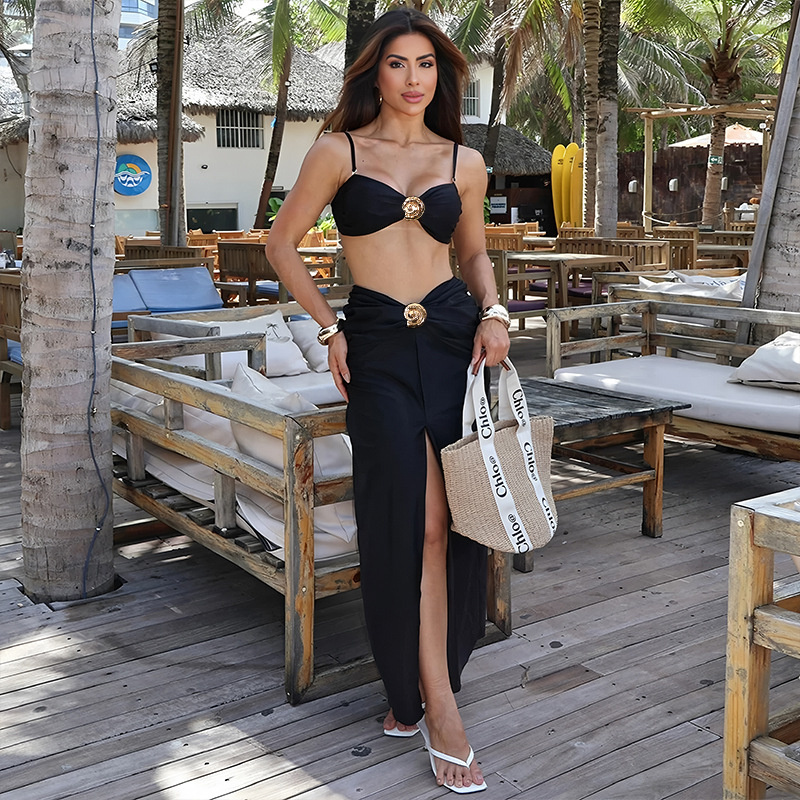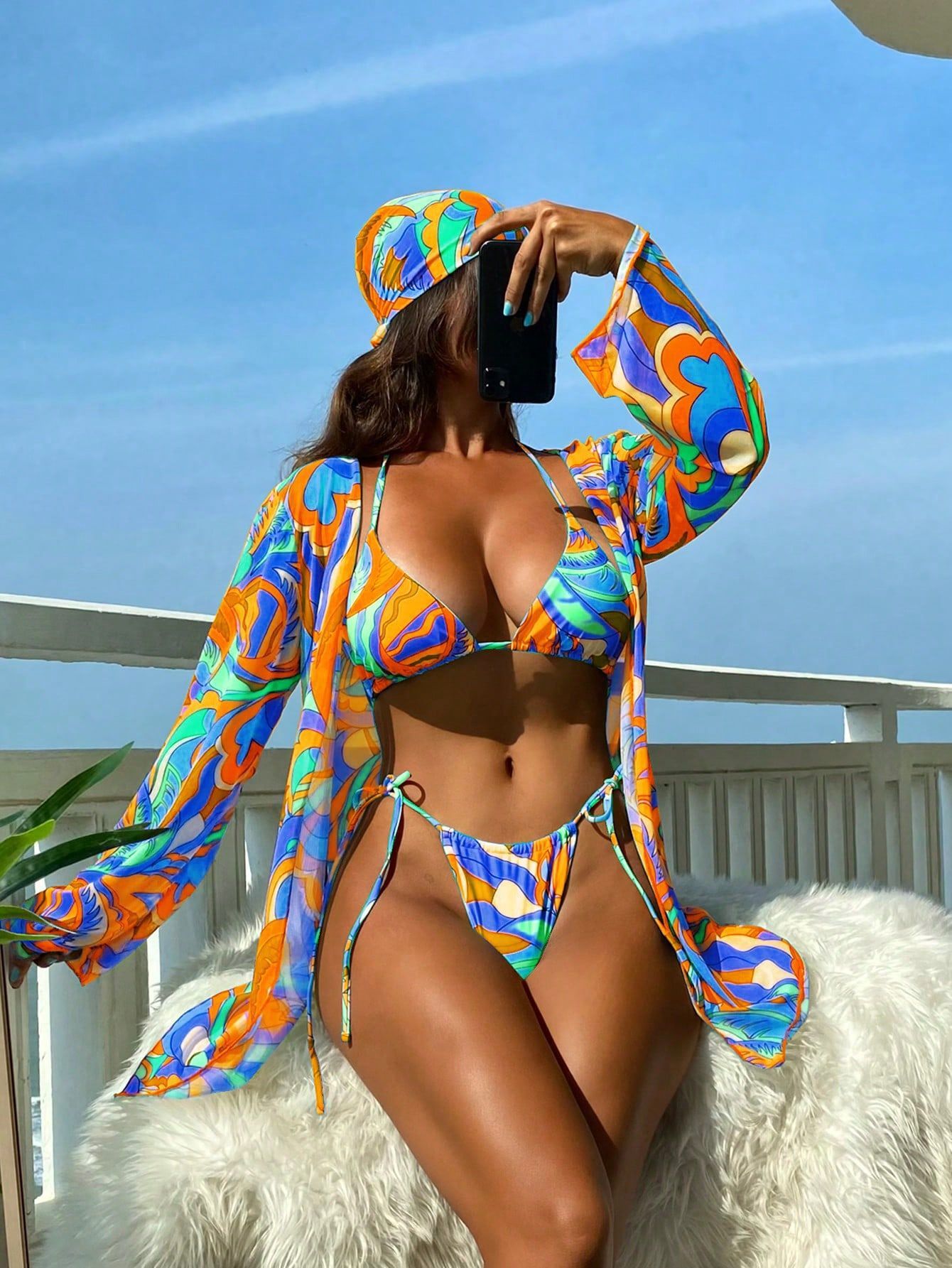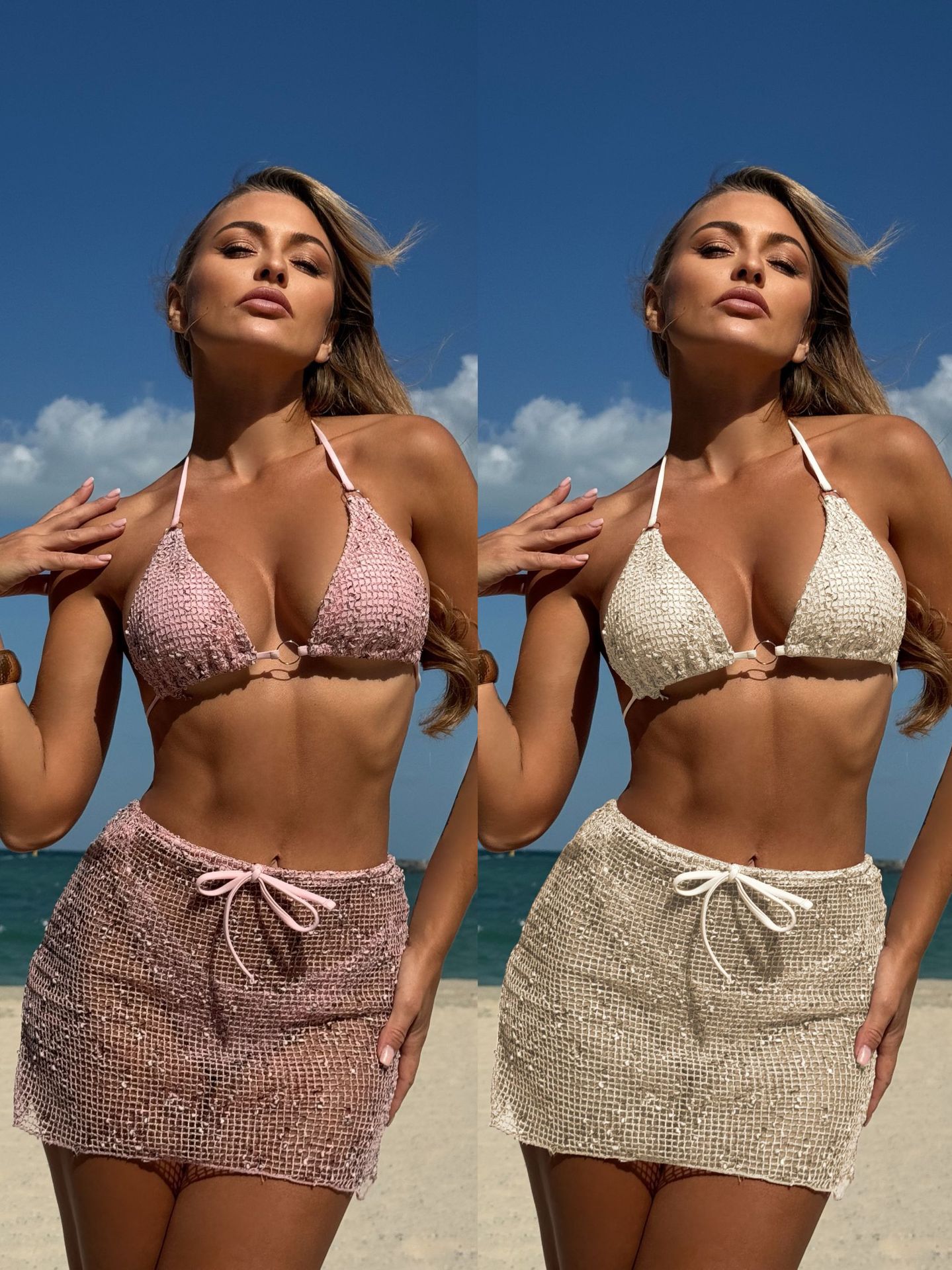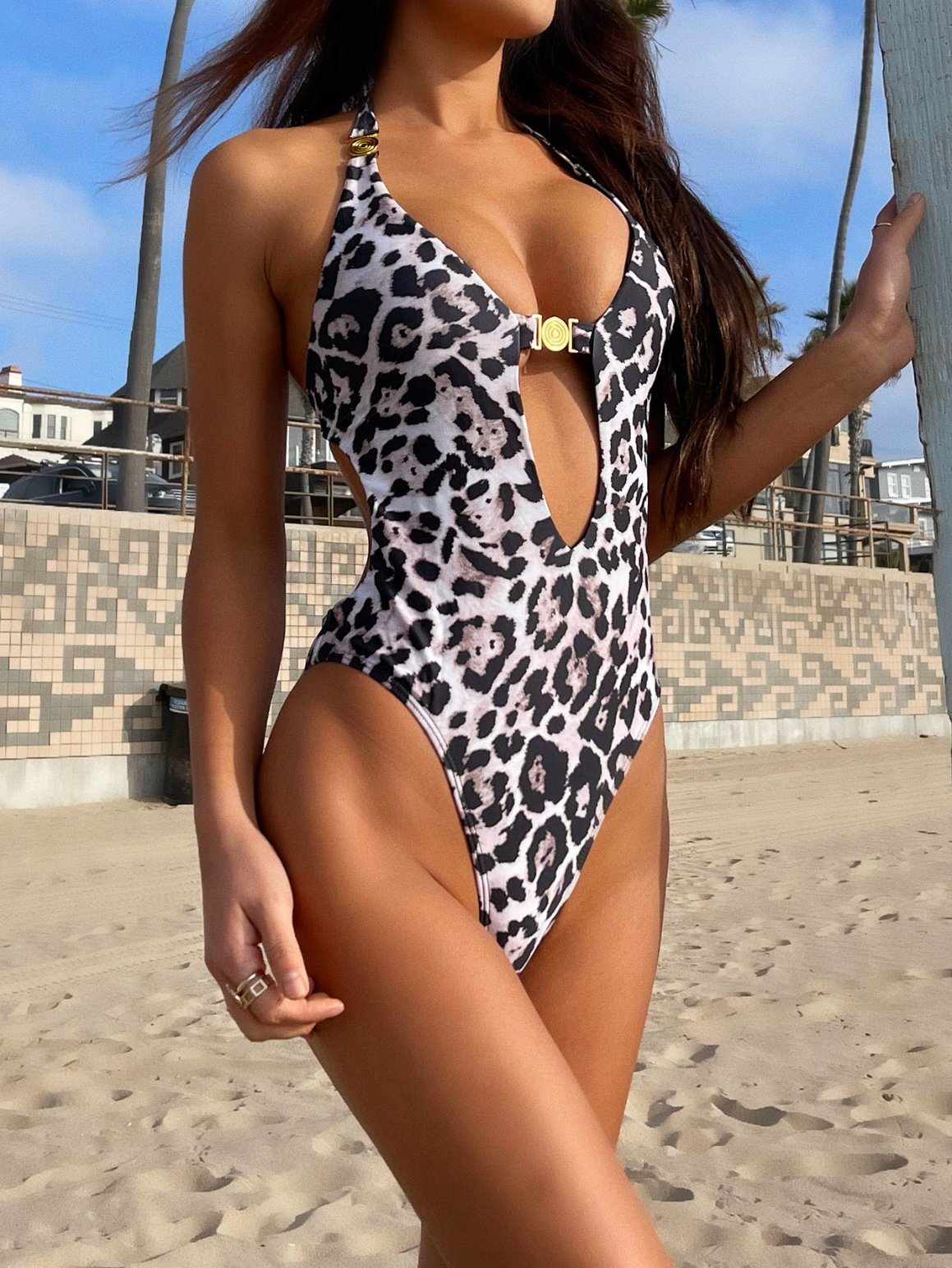2024-2025 Euro-American Swimwear Market Trends: Why Adjustable Micro Bikinis Stand Out
The global swimwear market is expanding rapidly, and your next bestseller depends on tapping into niche growth areas. In 2024, the global active and swimwear market reached $65.46 billion, with the pure swimwear segment projected to hit $32.1 billion by 2028 at a 7.1% CAGR . For Euro-American distributors, the key isn’t just chasing volume—it’s picking styles that align with shifting consumer demands.
One standout trend is the 75% year-over-year growth in thin-strap and thong bikini styles in 2024 . While traditional Brazilian-cut swimwear’s market share dipped from 53% to 38% last year, the adjustable side string design is reviving interest in micro bottoms . This tweak addresses a major pain point for your retail partners: fit variability. Consumers aged 16-35—the core bikini buyers —want styles that flatter diverse body types, and adjustable strings deliver. Plus-size shoppers and those with curvier hips specifically seek out side-tie designs for customizable fit, reducing return rates for your retail clients.
Price trends also work in your favor. Average swimwear prices rose 5% from 2023 to 2024, jumping from €38 to €40 . With adjustable micro bottoms positioning as a “premium basic,” you can command wholesale prices that boost margins without alienating budget-conscious retailers. The sweet spot? Aligning with the dopamine color trend—blues, greens, and pinks dominate 2024 collections —to keep inventory moving fast.

OEM Core Advantages: Adjustable Side Strings vs. Standard Micro Bikini Bottoms
When sourcing OEM Brazilian thong swimwear, the adjustable side string isn’t just a design feature—it’s a business asset. Let’s break down how it outperforms standard fixed-style micro bottoms for B2B partners.
First, fit versatility cuts operational costs. Fixed-size micro bottoms have a 12-15% return rate on average due to fit issues, but adjustable styles drop that to 4-6% . For a distributor moving 10,000 units annually, that’s 800-1,100 fewer returns to process—saving time and shipping expenses. Retailers notice this too: stores carrying adjustable styles report 22% faster inventory turnover because the same product works for sizes XS to L.
Sustainability, a non-negotiable for 68% of Euro-American consumers , is easier to deliver with adjustable OEM options. Top OEM factories now use Ecolux™ and Ecorib® fabrics—blends of recycled nylon and plant fibers that resist chlorine, saltwater, and sun damage . These materials meet OEKO-TEX 100 standards, which is mandatory for entry into EU markets. By sourcing adjustable bottoms in sustainable fabrics, you tap into the “eco-luxury” segment that’s growing 3x faster than conventional swimwear.
Customization flexibility is another OEM win. Unlike mass-produced styles, reputable OEMs let you tweak string length, hardware (metal vs. plastic toggles), and fabric prints to match regional trends. For example, Florida retailers prefer neon strings for beach markets, while Scandinavian buyers opt for muted tones. This level of customization helps your retail partners stand out against big-box brands like Zara and Etam .
The table below compares key metrics between adjustable side string micro bottoms and standard fixed styles for distributors:
| Feature | Adjustable Side String Micro Bottoms | Standard Fixed-Style Micro Bottoms |
|---|---|---|
| Size Range Coverage | XS-L (one design fits 4 sizes) | XS-L (separate patterns per size) |
| Average Return Rate | 4-6% | 12-15% |
| Retailer Reorder Rate | 78% within 3 months | 52% within 3 months |
| Sustainable Fabric Option | 92% of OEMs offer recycled materials | 65% of OEMs offer recycled materials |
| Customization Lead Time | 3-4 weeks | 4-6 weeks |
Navigating Euro-American Compliance & Sourcing for OEM Swimwear
For B2B distributors, compliance errors can sink your business—especially with new regulations rolling out in 2024-2025. When sourcing adjustable side string micro bottoms, you need to align with both EU and US standards to avoid costly penalties.
Let’s start with the EU: the new General Product Safety Regulation (GPSR) takes effect December 13, 2024 . This regulation covers all non-food consumer goods, including swimwear, sold in the EU and Northern Ireland. Key requirements for your OEM partners include: visible traceability labels (product ID, manufacturer info), documentation of safety testing, and a formal declaration of conformity. Unlike the old directive, GPSR imposes stricter penalties for non-compliance—up to €15 million or 4% of global revenue for severe violations.
In the US, the Consumer Product Safety Improvement Act (CPSIA) mandates a General Certificate of Conformity (GCC) for all apparel . For adjustable micro bottoms, this means two critical steps: first, fabric flammability testing (per 16 CFR Part 1610, the fabric must not burn faster than 3.5 seconds), and second, a self-certified GCC document filed with the CPSC. Without a GCC, Amazon and major retailers will pull your products, and customs may seize shipments.
Sourcing from OEMs that prioritize compliance saves you headaches. Look for factories that provide third-party test reports (SGS or Intertek are trusted) and pre-print required labels. Avoid suppliers with MOQs below 50 units—these often cut corners on testing . Most reputable OEMs have MOQs of 50-100 sets, with production lead times of 3-4 weeks .
Supply chain transparency is also tied to consumer trust. 73% of Euro-American shoppers check for “sustainably made” claims, so your OEM should share details about fabric sourcing (e.g., recycled nylon from regenerated ocean plastic) and ethical labor practices. Some even offer blockchain tracking for fabric batches— a selling point for high-end boutiques.
Profitability Breakdown: Pricing & Margins for B2B Distributors
At the end of the day, your success depends on margins. Let’s map out the numbers for adjustable side string micro bikini bottoms, using 2025 market data.
First, OEM costs. Sourcing from top-tier factories (with sustainable fabrics and compliance certifications) typically costs $8-$15 per unit for orders of 500+ . This includes adjustable strings, custom prints, and pre-compliance testing. For smaller orders (100-200 units), expect to pay $12-$18 per unit . Shipping to EU ports adds $1.20-$2 per unit, while US-bound shipments cost $0.80-$1.50 per unit via ocean freight.
Wholesale pricing varies by market. In the US, you can sell to boutique retailers at $25-$32 per unit, and to chain stores at $20-$26. In the EU, wholesale prices range from €22-€28 (≈$24-$30) . This gives you gross margins of 40-60%—higher than the 35-45% average for fixed-style swimwear.
Retail markup amplifies this value. Most retailers price micro bikini bottoms at 2.2x-2.5x wholesale . That means your $25 wholesale unit becomes a $55-$62 retail product—right in line with 2024’s average €40 ($43) swimwear price point . Retailers are willing to pay more because adjustable styles have higher sell-through rates: 85% of adjustable bottoms sell within 60 days, compared to 70% for fixed styles.
Inventory management also impacts profits. Because adjustable bottoms fit more sizes, you can reduce SKU count by 40%—cutting storage costs and minimizing dead stock. For example, instead of carrying XS, S, M, L fixed styles, you stock one adjustable design that covers all four sizes. This lowers your upfront investment and makes reordering more efficient.
FAQ
Q: What’s the typical MOQ for adjustable side string micro bikini bottoms from OEMs?
A: Most reputable OEMs have a minimum order quantity (MOQ) of 50-100 units per design . For orders with custom prints or sustainable fabric upgrades, MOQs often start at 200 units. Some factories offer lower MOQs (20-30 units) but charge 20-30% higher per-unit costs and may skip pre-compliance testing.
Q: Do adjustable side strings require additional compliance testing for EU/US markets?
A: Yes, but the testing is minimal if your OEM uses quality materials. The strings themselves need to pass tensile strength tests (to ensure they don’t break under normal use) and, if they have metal hardware, lead content testing (US: <100ppm; EU: <10ppm). Reputable OEMs include this in their standard safety packages, which also covers fabric flammability for GCC compliance .
Q: How much can I increase wholesale prices for sustainable fabric options?
A: You can add 15-20% to your wholesale price for recycled nylon or plant-based fabric versions . Euro-American retailers accept this premium because their customers pay 25% more for sustainable swimwear on average. For example, a standard fabric unit wholesaling at $22 can sell for $25.30-$26.40 with recycled materials .
Q: What’s the lead time for custom OEM orders, including compliance paperwork?
A: Production typically takes 3-4 weeks for standard designs . Adding custom prints or hardware adds 1-2 weeks. Compliance documentation (GCC, GPSR declarations) usually takes 3-5 business days after production, assuming the OEM has already completed testing. Total lead time for door-to-door delivery is 6-8 weeks for EU/US destinations.




